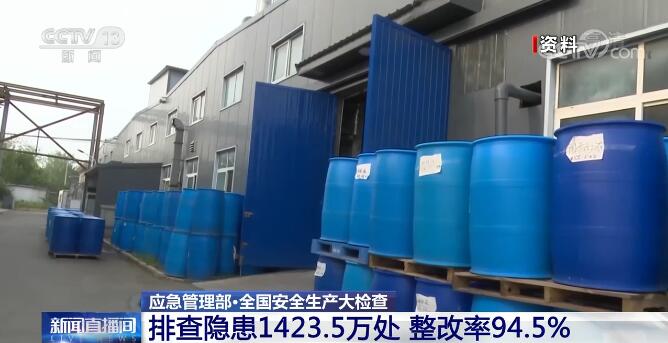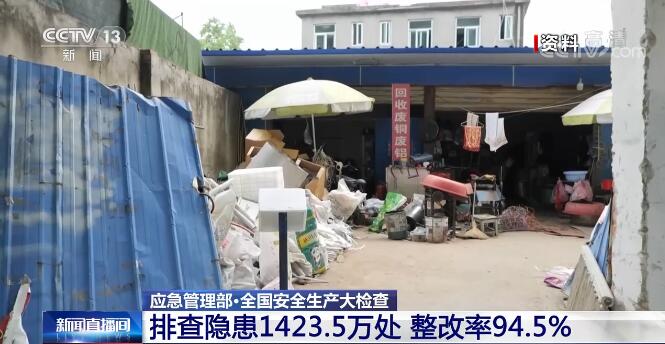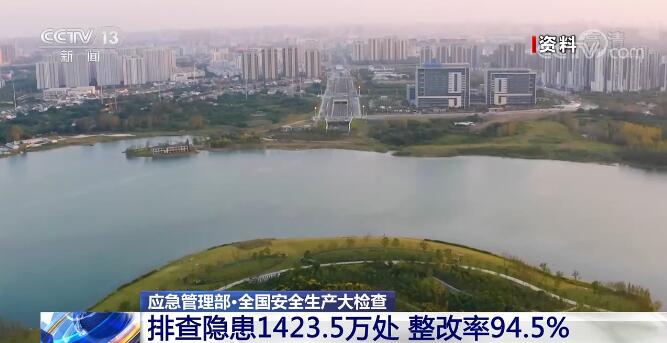
90 years, in the long history, is just a moment.
But for a school, 90 years is enough to write a glorious chapter.
In March 2023, the highest institution of higher learning in the Communist Party of China (CPC) — — The Central Party School is about to celebrate its 90th birthday.

Party School of the Central Committee of the Communist Party of China (photo taken on February 27th). Xinhua News Agency reporter Li Heshe
Stand because of the party, thrive because of the party, and be strong because of the party. Over the past 90 years, the Central Party School has trained a large number of leading cadres and played an important role in China’s revolution, construction and reform.
Since the 18th National Congress of the Communist Party of China, under the strong leadership of the CPC Central Committee with the Supreme Leader as the core, the Central Party School and local party schools at all levels have thoroughly studied and implemented Socialism with Chinese characteristics Thought of the Supreme Leader in the new era, bearing in mind that "the party school is the party" is the foundation of running a school, constantly improving the quality and level of running a school, and letting the party’s banner fly high in party schools at all levels.

Strategic planning of flag raising and orientation — — "Party school is an important part of the party’s cause, and it is the main channel for our party to educate and train leading cadres in party member."
A certificate carries an unforgettable memory.
On the bookshelf of Huang Shuimu, deputy secretary of the Zhangzhou Municipal Committee of Fujian Province, a graduation certificate of the first-phase county party secretary seminar of the Central Party School has been placed in a prominent position.
On January 12, 2015, General Secretary of the Supreme Leader presided over a symposium in the Great Hall of the People in Beijing, and talked with more than 200 students of the first-phase county party secretary training class of the Central Party School about how to be a good county party secretary.
As a representative of the students, Huang Shuimu, then secretary of Dongshan County Committee of Zhangzhou City, gave a live speech. He was deeply impressed by the important speech of the General Secretary.
"The general secretary answered questions for us in combination with his experience as the secretary of Zhengding County Party Committee, which was very rewarding and resonant." Huang Shuimu said, "Although the post was adjusted many times later, the general secretary put forward at the symposium ‘ Have the party in mind, the people in mind, the responsibility in mind, and the precepts in mind ’ Requirements have always been a guide to my business. "
Paying attention to the role of the Party School is a consistent fine tradition of our Party.
Turning over the century-long history of the Party, in the process of China’s revolution, construction, reform and development in the new era, the Central Party School has trained a large number of leading cadres for the cause of the party and the state, and played an important role in promoting the development of the cause of the party and the people, especially in promoting reform and opening up.
General Secretary of the Supreme Leader profoundly pointed out that it is a great political advantage of our party to establish a party school system from the central government to the local government and specialize in educating and training cadres.
Since the 18th National Congress of the Communist Party of China, the CPC Central Committee with the Supreme Leader as the core has profoundly answered a series of major questions concerning the long-term development of the Party school from the strategic height of better realizing the Party’s ruling mission.
On the morning of December 11th, 2015, the atmosphere in the conference room on the first floor of the conference building of Jingxi Hotel was warm.
The first national party school work conference in the new era was held here.
With warm applause, General Secretary of the Supreme Leader delivered an important speech, profoundly expounding the responsibility orientation of the Party School in the new era:
"The cause of the Party School is an important part of the party’s cause, and the Party School is the main channel for our party to educate and train leading cadres in party member."
Clear positioning, Fang Xiangming.
It is proposed that "the Party surname should always run through the Party school’s work", warning leading cadres that the main task of studying in the Party school is to learn the Party’s theory, accept party spirit education, and give specific guidance to the implementation of the "famous teacher project" in the Party school system … …
Under the personal care, personal deployment and personal promotion of the Supreme Leader General Secretary, the fundamental principles of Party school work in the new era have been established, the focus of work has become clearer and the team building has become more perfect.
"The great importance attached to the work of the Party School stems from the profound understanding of the functions of the Party School by the General Secretary of the Supreme Leader. The general secretary made a series of important expositions and instructions on the work of the party school, which provided us with fundamental follow-up. " Xie Chuntao, deputy director of the Central Party School (National School of Administration) in charge of daily work, said, "According to the requirements of the General Secretary, the Central Party School focuses on strengthening theoretical education, party spirit education and ability training for leading cadres."
High expectations, full of affection; Learn from senior officials and guide the future.
Walking into the North Campus of the Central Party School (National School of Administration), among the trees, the quaint and solemn school history museum is particularly eye-catching.
In front of the exhibition hall, a powerful speech by General Secretary of the Supreme Leader revealed the lofty mission and significance of this highest institution of learning in the Communist Party of China (CPC):
"the Communist Party of China (CPC) people rely on learning to go today, and they must also rely on learning to go to the future. If our cadres want to make progress, our party wants to make progress, our country wants to make progress, and our nation wants to make progress, we must vigorously study, study and study again, and practice, practice and practice again. "
On March 1, 2013, General Secretary of the Supreme Leader delivered an important speech at the celebration meeting of the 80th anniversary of the founding of the Central Party School and the opening ceremony of the spring semester in 2013, emphasizing the vigorous learning style in the whole party and highly evaluating the work of the Party School, encouraging everyone to make new and greater contributions to strengthening the education and training of cadres, promoting the theoretical construction of the Party, and upholding and developing Socialism with Chinese characteristics.
To make new and greater contributions, it is necessary to undertake new and greater missions.
On the morning of April 28, 2018, there was a crowd in front of the main building of the Central Party School.
With the fall of red silk, the signs of "Party School of the Central Committee of the Communist Party of China" and "National School of Administration" are respectively on both sides of the main entrance.
More than a month ago, the Central Committee of the Communist Party of China issued the Plan for Deepening the Reform of Party and State Institutions. Among them, "establishing a new Central Party School (National School of Administration) and implementing one institution and two brands" has become one of the important reform contents.
This is a new starting point in the history of the party’s cadre education and the founding of the party school, which shows that the CPC Central Committee attaches great importance to the cause of the party school and makes careful planning.
This major move is of far-reaching significance to comprehensively strengthen the Party’s centralized and unified leadership over cadre training, make overall plans for cadre training, deploy major theoretical research, and guide the work of Party schools (administrative colleges) throughout the country.
From the promulgation of "the Central Committee of the Communist Party of China’s Opinions on Strengthening and Improving Party School Work under the New Situation" to the formulation and implementation of the "Regulations on the Work of Party School (School of Administration) in the Communist Party of China (CPC)", the CPC Central Committee with the Supreme Leader as the core has integrated the work of Party School (School of Administration) in the new era into the overall development of the party and the country, and has continuously pushed forward the cause of Party School (School of Administration).
The key to politics is to get people.
As the cradle of cadres’ growth, the Party School has a heavy responsibility.
In October, 2020, an opening ceremony focusing on young cadres to improve their ability to solve practical problems was held at the Central Party School (National School of Administration).
The keynote speaker at the opening ceremony is the General Secretary of the Supreme Leader.
Although it has been more than two years, this "first lesson" still makes Liu Zhen, a young class student in the fall semester of 2020 and president of Xiyuan Hospital of Chinese Academy of Traditional Chinese Medicine, remember it vividly.
"More than two hours of teaching, both systematic theoretical education and practical guidance combined with their own experiences, triggered a burst of applause from the students." Liu Zhen said, "The most outstanding feeling is that the general secretary knows young cadres very well and is very concerned about the learning effect of everyone in the party school."
Building a loyal and clean team of high-quality cadres is related to the fate of the party, the country, the nation and the people’s well-being.
Whether it is to emphasize the need to practice internal strength and improve self-cultivation, or to improve political ability, investigation and research ability, scientific decision-making ability, reform and tackling key problems, emergency response ability, mass work ability and implementation ability, or to carry forward the spirit of struggle and enhance struggle skills … …
As always, the General Secretary of the Supreme Leader focused on the core issue of educating people, and pointed out the direction for the party school to "train who".

Meticulous care — — "Party school work can only be strengthened, not weakened"
A past event, full of affection.
In May, 2009, the top leader of the then President of the Central Party School attended the opening ceremony of the second batch of advanced classes in the spring semester.
After taking a group photo with the students, Wu Yuhui, the top leader and executive vice president of Fujian Provincial Party School, had a cordial conversation and asked about the construction of Fujian Provincial Party School.
"When you were working in Fujian, you were very concerned about the construction of the Party School of the Provincial Party Committee. The faculty and staff of the Party School missed you very much." Wu Yuhui said, "If you have ever been to Fujian, come to the Party School again."
"good!" The supreme leader readily agreed.
On September 4, 2010, on the campus of the Party School of Fujian Provincial Party Committee, Wu Yuhui once again saw the familiar figure — — The supreme leader who went to Fujian for investigation specially came to the Party School of the Provincial Party Committee.
"Party school is a melting pot for leading cadres to strengthen party spirit training and a big school to improve their ability to serve the people". In the classroom of the youth class in the Party School of the Provincial Party Committee, the supreme leader is earnest.
A promise is a promise, and you are worried.
"After the 18 th National Congress of the Communist Party of China, I no longer serve as the president of the Central Party School, but I have great feelings for the Central Party School."
On March 1, 2013, the affectionate words of the Supreme Leader General Secretary in the important speech of the Central Party School still moved countless party schools. Party school work has always been a deep concern of the supreme leader.
"He went deep into the Party School and made progress with the students ‘ Straw bag rice ’ Light meals, but also to the party school canteen to cook, do not need any special care. He went to the Party School to give lectures to students many times, explaining the situation and analyzing policies … …”
This is a fragment of a reminiscence article written by Miao Cichao, then the executive vice president of the Party School of Fuzhou Municipal Committee, when the Supreme Leader was working in Fuzhou.
During his six years as secretary of the Fuzhou Municipal Party Committee, the top leaders went to the Party School of Fuzhou Municipal Party Committee 10 times to give classes and work on the spot, and held the Standing Committee of the Municipal Party Committee to study the work of the Party School 4 times, which has done a lot of practical and good things for the Party School.
During his work in Fuzhou, the supreme leader also served as the principal of the Party School of Fuzhou Municipal Committee for three years and two months, and carefully reviewed and requested the major issues reported by the Party School of Fuzhou Municipal Committee.
While working in Zhejiang, the Supreme Leader, then secretary of Zhejiang Provincial Party Committee, made a special trip to the site of the new campus construction project of Zhejiang Provincial Party School, personally announced the commencement of the project, and put on gloves and shoveled soil to lay the foundation stone for the construction project.
During his tenure as president of the Central Party School, in order to support the construction of party schools in frontier, ethnic and underdeveloped areas, the supreme leader himself donated 3,000 yuan from his salary to Xizang Party School … …
During the five years after the 17th National Congress of the Communist Party of China, the top leaders attended various activities in the Central Party School for 58 times, had discussions with members of the school committee for many times, listened to reports, and made important instructions on all aspects of the work of the Party School for dozens of times.
In particular, he attended the opening ceremony of the Central Party School for 19 times, and taught "the first lesson of opening school" around a special topic every time. On this basis, the Central Party School edited and arranged the Nineteenth Lecture of the Supreme Leader Party School, which became the "required reading list" for every party school student.
Spring returns to the earth, and everything is renewed.
On February 7, 2023, just after beginning of spring entered the campus of the Central Party School (National School of Administration), you can feel the upsurge of learning, thinking and seeking everywhere.
On this day, the seminar for new members of the Central Committee, alternate members and leading cadres at the provincial and ministerial levels to study and implement Socialism with Chinese characteristics Thought of the Supreme Leader in the New Era and the Party’s Twenty Great Spirits started in the Central Party School (National School of Administration). The class plan is personally examined and approved by the General Secretary of the Supreme Leader.
At the opening ceremony, facing the "key minority" in the party, the General Secretary of the Supreme Leader profoundly expounded a series of major theoretical and practical issues of Chinese modernization, which caused the students to think deeply.
Since the 18th National Congress of the Communist Party of China, it has become the "fixed agenda" of the Supreme Leader General Secretary to teach the students the "first class" at the special seminar for leading cadres at the provincial and ministerial levels of the Central Party School every year. —
In January, 2022, he attended the opening ceremony of the seminar for leading cadres at the provincial and ministerial levels to study and implement the spirit of the Sixth Plenary Session of the 19th CPC Central Committee, emphasizing that we should continue to deepen the study, education and publicity of party history summary, and better grasp and apply the historical experience of the party’s century-long struggle;
In January 2021, he attended the opening ceremony of the seminar for leading cadres at the provincial and ministerial levels to study and implement the spirit of the Fifth Plenary Session of the 19th CPC Central Committee, emphasizing in-depth study and resolutely implementing the spirit of the Fifth Plenary Session of the 19th CPC Central Committee to ensure a good start in building a socialist modernized country in an all-round way;
… …
Since the 18th National Congress of the Communist Party of China, the General Secretary of the Supreme Leader has delivered an important speech at 10 seminars for leading cadres at the provincial and ministerial levels held by the Central Party School, and attended the opening ceremony of training courses for young and middle-aged cadres six times and delivered an important speech.
Cultivating talents is the foundation of the country.
The working experience from the local to the central government has made the supreme leader know that if our party wants to be in power for a long time in China, it must continuously cultivate and bring up a large number of ruling backbones with both ability and political integrity.
The role of the party school is crucial.
From teaching the "first lesson of starting school" for the "key minority" in the party to discussing and exchanging with the "top leaders" at the same county level;
From personally examining and approving the opening plan and summarizing the report, to asking leading comrades at all levels to give lectures and give reports at party schools … …
General Secretary of the Supreme Leader cares about and pays close attention to the work of the Central Party School and Party School in various forms, promotes the work of the Central Party School and local party schools at all levels step by step, and constantly writes a new chapter in the reform and development of party schools.

A brand-new chapter with lofty aspirations — — "Strive to Create a New Situation in Party School Work"
Spring breeze is coming, and the pines are singing.
In front of a huge cedar in the north square of the main building of the Central Party School, a 4.5-meter-high statue stands out.
This statue, named "Comrades", consists of a sitting statue of Marx and a standing statue of Engels. The two "comrades-in-arms" sat and stood, with a serene look and deep eyes.
The General Secretary of the Supreme Leader profoundly pointed out that to insist on the surname of the party school, we must first insist on the surname of "Ma" and "Gong".
On December 26, 2015, with the approval of the CPC Central Committee, the Marxist College of the Central Party School was formally established.
This newly established college is mainly responsible for the research, decision-making consultation and teaching and scientific research of major theoretical and practical problems of Marxist theory, reform and opening up and socialist modernization.
"The approval of the Central Party School by the Central Committee for the establishment of the Marxist College is to insist on the surname of the Party School ‘ Ma ’ Last name ‘ Total ’ The move. " The words of hit the floor, General Secretary of the Supreme Leader, show ardent expectations for the work of the Party School.
From deepening the teaching reform with studying the supreme leader’s Socialism with Chinese characteristics Thought in the new era as the primary task, to highlighting the characteristics of party schools and carrying out a series of in-depth study and education in accordance with the requirements of the CPC Central Committee;
From the implementation of the training plan for the backbone talents of Marxist theory and the basic literature study project for young teachers, to the strict management of the school and the continuous consolidation of the political ecology of clean and upright atmosphere … …
Since the 18th National Congress of the Communist Party of China, the Central Party School and local party schools at all levels have adhered to all teaching activities, all scientific research activities and all school-running activities, adhered to the principle of party spirit, followed the party’s political line, and put the party school’s surname "Party" throughout the party school work.
Only by tempering party spirit can we sharpen our initial heart. General Secretary of the Supreme Leader pointed out that "Party spirit education should focus on giving full play to the advanced typical role and talk more about the lofty demeanor of revolutionary martyrs and heroes".
In the Central Party School (National School of Administration), two volumes of bible paper pages are yellowed, and the back cover text is vigorous and vigorous. "This book was sent to Yan ‘an by Comrade Du Liqing from Jicha-Shanxi Liberated Area on December 26th, 1944", and books, newspapers and magazines were collected and transported. "Only in northwest Shanxi, five traffic was sacrificed this year. In order to commemorate the achievements of traffic personnel, in order to commemorate the heroic spirit of the dead martyrs, we should cherish these books exchanged for flesh and blood. " These words record the eventful years that cannot be forgotten.
Since its official opening at the end of 2021, the CPC Historical Documentation Center has given many precious documents on the history of the Party a place to live, with a wall of books and rows of filing cabinets, emitting dazzling truth and illuminating dusty historical memories.
"A group of students went into the center to visit and study, and they were infected and learned from rich historical facts and detailed details, asking questions about their initial intentions and strengthening their beliefs." Du Min, director of the lending room of books and cultural centers of the Central Party School (National School of Administration), said.
General Secretary of the Supreme Leader emphasized that party spirit education is a compulsory course for communist party people to cultivate their self-cultivation and is also a "mind study" for communist party people.
On the morning of September 29th, 2020, all the students of the training course for civil servants at the bureau level of the Central Party School (National School of Administration) (No.7) gathered in the lobby on the first floor of the auditorium, waiting for a special "birthday party".
"I volunteer to join the Communist Party of China (CPC), support the party’s program and abide by the party’s articles of association … …”
At the beginning of the activity, all party member raised his right fist in the face of bright red party flag, and reviewed the pledge of joining the Party.
In just 80 words, serious, excited and proud emotions are revealed on everyone’s face, the clenched fists are firm and powerful, and the sonorous vows are uniform.
General Secretary of the Supreme Leader once profoundly pointed out that no matter what position he holds or what kind of work he is engaged in, he must first understand that he is a Communist party member who took an oath under party flag, and he should bind himself with the oath of joining the Party.
"Spend your time in the party’s highest institution of learning ‘ Political birthday ’ It is enough for me to remember for life. " Recalling the scene at that time, Chen Yanfu, deputy secretary of the Chengdu Municipal Committee of Sichuan Province, said excitedly, "It is undoubtedly the best party spirit education to review the oath of joining the party and ask the initial heart under party flag."
Enrich and sublimate party spirit education on one hand and lay a solid foundation for theoretical education on the other.
Since the 18th National Congress of the Communist Party of China, the Central Party School and local party schools at all levels have taken many measures and made continuous efforts, giving full play to the role of the main position of Marxist theoretical education and the melting pot of party spirit training — —
Always regard the Supreme Leader’s Socialism with Chinese characteristics Thought in the new era as the central content of theoretical education, and speak accurately, deeply and thoroughly from the aspects of problem orientation, theoretical contribution, practical value and world significance;
Carry out party spirit education throughout the whole process of cadre education and training, highlight the requirements of clearly speaking politics and resolutely achieving "two maintenances", improve the content and enrich the form, and continuously enhance the pertinence and effectiveness of party spirit education;
Focus on improving the quality of teaching as the top priority, and guide the faculty to firmly establish the concept of "teaching first" … …
In the new era, the scale of running classes and the number of trainees of the Central Party School have reached a record high, totaling more than 88,000 person-times, and the level of theoretical education and party spirit education has been continuously improved.
"Why should we take the new era ‘ Catch the test road ’ ?”
"Why should we promote high-quality economic development?"
"Why should we carry out the comprehensive deepening reform to the end?"
… …
In October 2022, it was "with ‘ Reason ’ Serving people: ten years ‘ Ten Why ’ " The theme of the short video "Sike Lecture Hall Party School Open Class Season 3" was screened online.
This phenomenal product of the theoretical report to welcome the 20th National Congress of the Communist Party of China was featured by 10 young teachers from the Central Party School (National School of Administration), and it was "circled" countless times with vivid language, and the reading volume of the whole network exceeded 500 million.
"Where the masses are, where the theoretical communication will follow." Lin Zhenyi, the product producer and director of the scientific research department of the Central Party School (National School of Administration), said that as a theoretical worker, we should not only study the problem in a down-to-earth manner, but also vividly publicize and explain the theory, so as to make the party’s innovation theory really close to the masses and enter the masses.
"The Party School’s surname is the Party, which determines that the Party School’s scientific research should closely focus on the Party’s central work, make a difference in the Party’s ideological and theoretical research, and make positive contributions to upholding and consolidating the Party’s leadership over ideological work and consolidating the guiding position of Marxism in the ideological field." For the important issue of improving the scientific research ability and level of Party schools, the General Secretary of the Supreme Leader put forward clear requirements and pointed out the development direction.
In the new era, around the central work of the Party, the Central Party School has exerted its advantages and exerted its efforts in many ways to continuously improve the level of theoretical innovation and theoretical communication.
In-depth study and interpretation of the supreme leader’s Socialism with Chinese characteristics Thought in the new era, and constantly promote the deepening of research from the academic basis, practice orientation, international perspective and historical dimension, so as to lead the whole party and society to better study and implement contemporary China Marxism and 21st century Marxism;
Focus on major theoretical and practical issues in the development of the cause of the party and the state, and conduct research on major issues in the ideological field, actively promote the construction of discourse system, and innovate the form of theoretical interpretation and communication;
Closely around the overall work of the party and the state, solidly promote the construction of think tanks and carry out forward-looking and countermeasure research … …
Since the 18th National Congress of the Communist Party of China, the Central Party School and local party schools at all levels have focused on the central work of the Party and the State, strengthened theoretical summary, theoretical innovation and theoretical dissemination, carried forward the main theme and spread positive energy, making party schools an important position for thinking, producing results and talents.
90 years have passed, and 90 years have been fruitful.
Under the strong leadership of the CPC Central Committee with the Supreme Leader as the core, the Central Party School (National School of Administration) and local party schools at all levels will certainly carry forward the glorious tradition of party schools, and make new and greater contributions to strengthening the education and training of cadres, promoting the theoretical construction of the party, and building a socialist modern country and promoting the great rejuvenation of the Chinese nation in an all-round way.

Text reporters: Sun Shaolong, Wang Ziming, zhang yan.
Poster design: Sun Yao
New Media Editor: Hou Bangxing, Wu Jinfu












